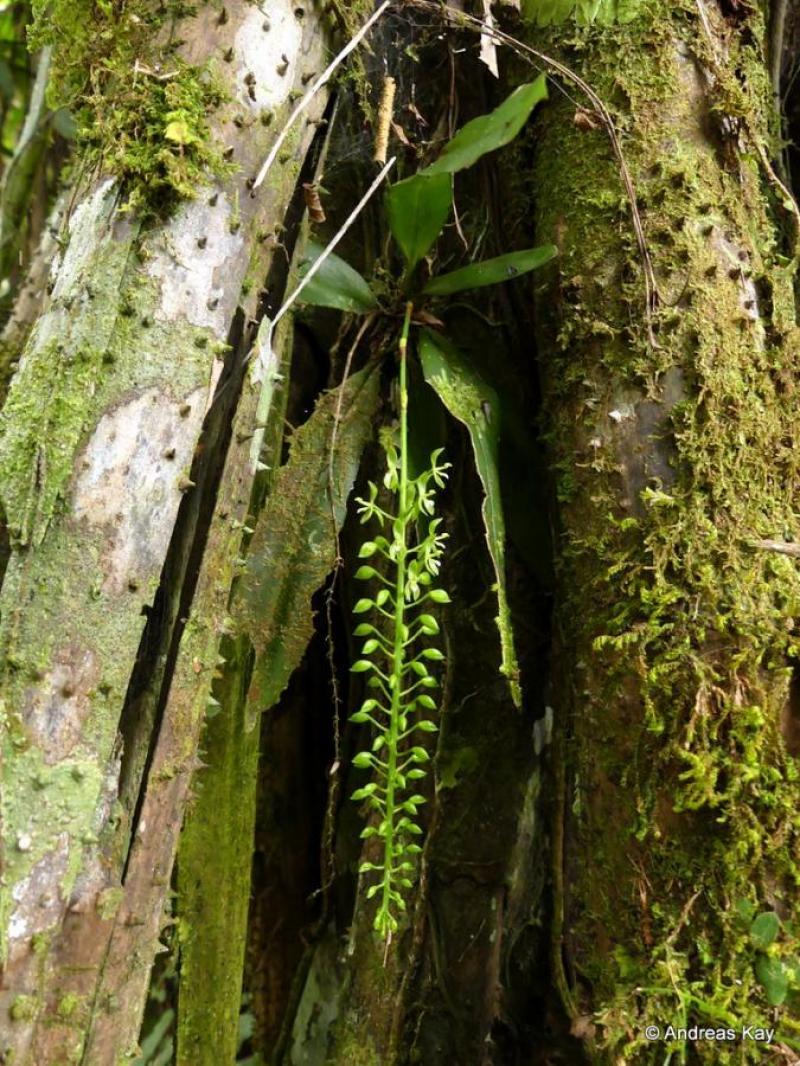Notylia microchila
Also known as: The Tiny Lipped Notylia or Notylia conduplicans Notylia amesii in the subfamily: Epidendroideae
Native to: Bahia - Brazil Loreto - Peru Para - Brazil Pasco - Peru Provincia del Tungurahua - Ecuador
General Information
The Tiny Lipped Notylia is a small sympodial warm to hot growing epiphytic orchid belonging to the sub family Epidendroideae native to Brazil, Peru and Ecuador.
Plant Description
Sympodial. Grows to 28-33cm. Each new growth has a single erect elliptic, oblong shaped leaf that grows to 2.7-18cm long. Pseudobulbs grow to 1.5cm
Care Notes
These orchids have a fine root system that can quickly die back if left dry for too long, but also does not like to be kept wet, so water regularly but ensure that the mix is dry before watering.
Climate
These orchids thrive in hot, steamy locations, living in low altitude jungle areas where they often receive heavy sporadic rainfall, warm humid winds, and sunlight filtered year round by the surrounding growth.
They can survive, but will often struggle if the humid, warm conditions are not met - roots will die back and leaves will thin out, spikes and buds can be aborted if conditions change too frequently during flowering. They can tolerate cooler or drier conditions temporarily, but extended exposure will seriously affect them.
They will grow best in the tropics, especially coastal areas where they receive ocean breezes, but can do well in a greenhouse, supplied that the humidity is kept high, temperature is not allowed to skyrocket and extra shade is provided during hot weather.
Grows at low to high elevations. Rainfall ranges from 132mm to 345mm per day, heaviest in October and lightest in February. Humidity ranges from 73% to 86%, highest in October and lowest in June. Temperature ranges from 20C to 33C, highest in March (22C to 33C) and lowest in January (20C to 30C).
Watering
These orchids prefer a wet-dry cycle between waterings, they should be watered frequently but only when the moisture is approaching dryness, where the pot feels light and/or the media looks dry. Keep an eye on mounted orchids in warm weather as they may dehydrate quickly.
Fertiliser
Reduce fertiliser when plant is dormant.
Potting
These plants are quite forgiving and will do well repotted ever 2-3 years. The mix should be coarse, well draining, and allow space for air to move and for roots to grow.
Alternatively, these plants will also do well mounted to tree fern or cork slabs, or mounted to trees.
Best time for repotting or mounting the orchids is the end of winter when new growths start to appear. Avoid repotting during hot weather,




